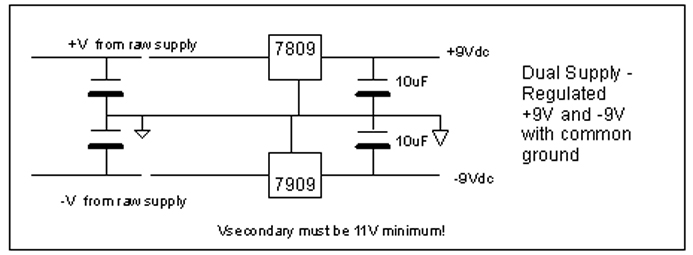Voltage Balance
What is Voltage Balance?
The voltage balance is the difference in magnitudes, in percent, of two output voltages that have equal nominal voltage magnitudes but opposite polarities.
The voltage balance is usually used when referring to dual power supplies. This is the difference, between in magnitude of the positive and negative output voltages and as a percentage. Ideally, the value should be zero, but this is barely practical in most of the supplies.
Supposing a dual power supply has a positive 12 V output on one end and a negative 12.12V on the other output. The voltage balance, in this case, will be given by {(12.12-12.00)/12} x 100 % which is equal to one percent.
A balanced power has symmetrical voltages, equal but different polarity. These are used in powering audio amplifiers, dual supply operation amplifiers, come computer circuits etc. The dual supplies are sometimes used to power analog ICs whose outputs are often required to swing from negative to the positive side.
In the op amp operation, it is usually necessary to produce signals that span both the negative and positive voltage values, hence the need for a dual output power supply.
Symmetrical voltages may also be used to drive a motor in either direction. The positive voltage moves the motor forward while the negative reverses the direction.
Most of the applications that require equal but different polarity supplies may malfunction if the voltage balance is bigger than design limits. For example, an amplifier may lose its bias and affect the operation or power output. In particular, a stereo audio power amplifier may have one channel with a lower output when the supply is lower than the other channel due to the large voltage balance.
Generating dual output voltages
There are different ways of generating two dual output voltages in a power supply. The stability and regulation of the output differ with the design of the power supply and components used. The voltage balance may, therefore, be more in linear supplies compared to that of an SMPS.

A simple dual output voltage of a linear supply – Image Credit
Other than a linear or SMPS that is designed to produce a symmetrical output, there are other circuits that can produce the same from a single dc voltage. For example, the IC 555 can be used as symmetrical DC to DC converter using the appropriate circuit components and circuit layout.
The IC generates high-frequency pulses which are then rectified by four diodes to produce a symmetrical output, just the same way a transformer and rectifier works.
Some dual power supplies can produce the nominal output voltage without requiring a minimum load. In several applications, the voltage balance of about 10 % is acceptable and will not impact very much on the circuit operation. However, this is not acceptable for sensitive and precision applications, which may require very low or zero voltage balances.
In some dual output supplies, the two loads should be balanced, otherwise, loading one output heavily or leaving one unloaded may cause significant voltage balance.




